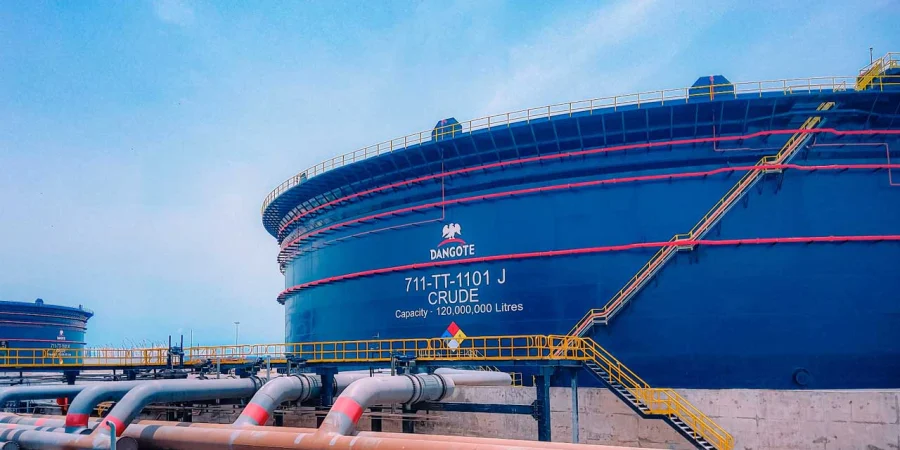Nigeria’s hope of attaining fuel self-sufficiency and ending the long-standing paradox of crude exports alongside massive fuel imports remains elusive, as both crude imports by the Dangote Refinery and petrol importation by the country surged in the first half of 2025.
Between January and June, the Dangote Refinery imported about 60 million barrels of crude oil from the United States and other countries, according to the company’s President, Aliko Dangote. At the same time, Nigeria’s petrol import bill exceeded N4 trillion, new data from the National Bureau of Statistics (NBS) released on Sunday showed.
Speaking at the West African Refined Fuel Conference in Abuja in July, Dangote disclosed that the refinery now buys between 9 million and 10 million barrels of crude monthly from international markets. “As we speak today, we buy 9–10 million barrels of crude monthly from the US and other countries,” he stated.
The refinery, once projected to end Nigeria’s dependence on fuel imports, has struggled to secure consistent local crude supply. Production shortfalls and the Nigerian National Petroleum Company Limited’s (NNPC) preference for foreign exchange-earning exports have left the refinery reliant on imports.
Meanwhile, NBS trade data revealed that Nigeria spent N2.3 trillion on petrol imports in Q2 2025, up from N1.76 trillion in Q1, bringing the half-year total to about N4.06 trillion. Petrol ranked among the top five imported commodities, alongside durum wheat, gas oil, crude petroleum oils, and cane sugar for refineries.
When mineral fuels as a whole are considered, imports in Q2 stood at N4.42 trillion, representing 28.95 per cent of total imports. Machinery and transport equipment followed with N4.33 trillion (28.38 per cent), while chemicals and related products accounted for N2.46 trillion (16.10 per cent).
The situation highlights the contradiction facing Nigeria’s energy sector: while the 650,000 bpd Dangote Refinery was built to ensure self-sufficiency, stabilise fuel prices, conserve foreign exchange, and transform Nigeria into a net exporter of refined products, the country still faces soaring import bills and capital flight.
On the export front, NBS data showed that petroleum oils valued at N1.26 trillion accounted for 42.5 per cent of exports to Africa in Q2. Jet fuel worth N408.76 billion (13.78 per cent), gas oil at N404 billion (13.62 per cent), and other petroleum residues at N157.51 billion (5.31 per cent) also featured prominently.
By mode of transport, 98.9 per cent of Nigeria’s Q2 exports (N22.5 trillion) moved by sea, with Apapa Port alone handling N17.93 trillion or 78.8 per cent. Lekki Deep Sea Port followed with N2.4 trillion (10.6 per cent). On imports, Apapa Port also dominated with N6.96 trillion (45.6 per cent), ahead of Lekki (N2.51 trillion, 16.4 per cent) and Tin Can Island (N1.97 trillion, 12.9 per cent).
The heavy reliance on Lagos ports continues to create congestion, overstretch facilities, and heighten risks of disruption, even as government pushes for expansion in Onne, Port Harcourt, Calabar, and Lekki.
Meanwhile, fresh figures from the Organisation of Petroleum Exporting Countries (OPEC) revealed that Nigeria’s crude oil production fell to a five-month low of 1.43 million barrels per day (bpd) in August, down 4.7 per cent from July. The data, published in OPEC’s September Monthly Oil Market Report (MOMR), excluded condensates.
Nigeria’s condensate output was 204,000 bpd in July, according to the Nigerian Upstream Petroleum Regulatory Commission (NUPRC), with August figures still pending.
Although production rose above 1.5 million bpd in June and July, Nigeria has only met its OPEC quota three times this year. Despite the decline, the country remained Africa’s top producer, ahead of Libya (1.38 million bpd), Algeria (947,000 bpd), and Congo (271,000 bpd).
Nigeria’s 2025 budget is based on a production benchmark of 2.06 million bpd (including condensates) and a crude price of $75 per barrel, underscoring the economic risks posed by continued output shortfalls.
Emmanuel Addeh
Follow us on:



